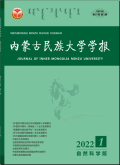内蒙古民族大学学报(自然科学版)2016,Vol.31Issue(1):77-80,4.DOI:10.14045/j.cnki.15-1220.2016.01.021
氧化应激与心房颤动
Oxidative Stress and Atrial Fibrillation
摘要
Abstract
Atrial fibrillation is a common clinical arrhythmia and has always been difficult to conquer from the mecha-nism, its pathogenesis is not clear, and there is almost no therapy. At present, the treatment of atrial fibrillation is still conservative therapy, such as symptomatic treatment, embolism prevention and so on, but the curative effect is poor. With the deep exploration of the mechanism of atrial fibrillation, people find the increase of oxidizing substances in the atrial muscle cells during atrial fibrillation, such as reactive oxygen species(ROS)and so on, and remove the oxi-dizing substances can obviously decrease the incidence of atrial fibrillation. Further studies find that the increase of these oxidizing substances can change atrial muscle organization structure, and in the end, the atrial myocytes apopto-sis appear. So it is speculated that oxidative stress may induced atrial myocyte apoptosis by some pathways, thus pro-mote and maintain atrial fibrillation, but the specific mechanism still needs further research.关键词
氧化应激/心房颤动/细胞凋亡Key words
Oxidative stress/Atrial fibrillation/Cell apoptosis分类
医药卫生引用本文复制引用
王建臻,孙洪涛,王洪军..氧化应激与心房颤动[J].内蒙古民族大学学报(自然科学版),2016,31(1):77-80,4.基金项目
内蒙古自治区自然科学基金资助项目(2014MS0831) (2014MS0831)

